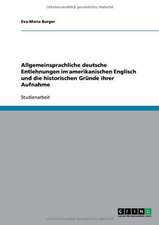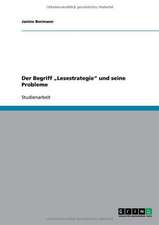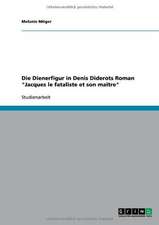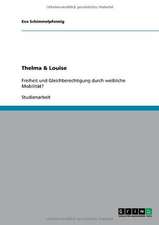Pronunciation: Critical Concepts in Linguistics
Editat de John Levis, Murray Munroen Limba Engleză Hardback – 22 iun 2017
Din seria Critical Concepts in Linguistics
- 34%
 Preț: 4369.55 lei
Preț: 4369.55 lei - 18%
 Preț: 1272.54 lei
Preț: 1272.54 lei - 34%
 Preț: 4805.70 lei
Preț: 4805.70 lei - 34%
 Preț: 6735.52 lei
Preț: 6735.52 lei - 34%
 Preț: 9833.67 lei
Preț: 9833.67 lei - 34%
 Preț: 7301.72 lei
Preț: 7301.72 lei - 14%
 Preț: 6742.03 lei
Preț: 6742.03 lei - 34%
 Preț: 9278.22 lei
Preț: 9278.22 lei - 34%
 Preț: 10679.71 lei
Preț: 10679.71 lei - 34%
 Preț: 7861.94 lei
Preț: 7861.94 lei - 34%
 Preț: 6742.44 lei
Preț: 6742.44 lei - 34%
 Preț: 7586.13 lei
Preț: 7586.13 lei - 34%
 Preț: 6700.27 lei
Preț: 6700.27 lei - 34%
 Preț: 6500.82 lei
Preț: 6500.82 lei - 34%
 Preț: 4373.63 lei
Preț: 4373.63 lei - 34%
 Preț: 6191.71 lei
Preț: 6191.71 lei - 34%
 Preț: 6136.37 lei
Preț: 6136.37 lei - 34%
 Preț: 6238.76 lei
Preț: 6238.76 lei - 34%
 Preț: 8986.73 lei
Preț: 8986.73 lei - 34%
 Preț: 6189.52 lei
Preț: 6189.52 lei - 34%
 Preț: 6209.19 lei
Preț: 6209.19 lei - 34%
 Preț: 4655.19 lei
Preț: 4655.19 lei - 34%
 Preț: 9272.88 lei
Preț: 9272.88 lei - 34%
 Preț: 6733.97 lei
Preț: 6733.97 lei - 36%
 Preț: 7584.39 lei
Preț: 7584.39 lei - 34%
 Preț: 6489.32 lei
Preț: 6489.32 lei - 34%
 Preț: 6741.19 lei
Preț: 6741.19 lei - 34%
 Preț: 5170.36 lei
Preț: 5170.36 lei - 34%
 Preț: 6739.17 lei
Preț: 6739.17 lei - 34%
 Preț: 5944.30 lei
Preț: 5944.30 lei - 34%
 Preț: 6735.10 lei
Preț: 6735.10 lei - 34%
 Preț: 7302.73 lei
Preț: 7302.73 lei - 34%
 Preț: 4941.28 lei
Preț: 4941.28 lei - 34%
 Preț: 6136.37 lei
Preț: 6136.37 lei - 34%
 Preț: 5619.64 lei
Preț: 5619.64 lei - 34%
 Preț: 6136.37 lei
Preț: 6136.37 lei - 34%
 Preț: 8993.29 lei
Preț: 8993.29 lei - 34%
 Preț: 4932.73 lei
Preț: 4932.73 lei - 34%
 Preț: 6145.14 lei
Preț: 6145.14 lei - 34%
 Preț: 7054.47 lei
Preț: 7054.47 lei - 34%
 Preț: 4378.10 lei
Preț: 4378.10 lei - 34%
 Preț: 5496.78 lei
Preț: 5496.78 lei - 18%
 Preț: 5920.20 lei
Preț: 5920.20 lei - 34%
 Preț: 4664.16 lei
Preț: 4664.16 lei - 34%
 Preț: 5936.34 lei
Preț: 5936.34 lei
Preț: 4237.71 lei
Preț vechi: 6397.95 lei
-34% Nou
Puncte Express: 6357
Preț estimativ în valută:
810.99€ • 843.56$ • 669.52£
810.99€ • 843.56$ • 669.52£
Carte tipărită la comandă
Livrare economică 15-29 aprilie
Preluare comenzi: 021 569.72.76
Specificații
ISBN-13: 9781138901971
ISBN-10: 1138901970
Pagini: 1714
Ilustrații: 210
Dimensiuni: 156 x 234 x 133 mm
Greutate: 3.22 kg
Ediția:1
Editura: Taylor & Francis
Colecția Routledge
Seria Critical Concepts in Linguistics
Locul publicării:Oxford, United Kingdom
ISBN-10: 1138901970
Pagini: 1714
Ilustrații: 210
Dimensiuni: 156 x 234 x 133 mm
Greutate: 3.22 kg
Ediția:1
Editura: Taylor & Francis
Colecția Routledge
Seria Critical Concepts in Linguistics
Locul publicării:Oxford, United Kingdom
Public țintă
Postgraduate and UndergraduateCuprins
Volume I: L1 Pronunciation: Descriptions, Variation and Change
Acknowledgements
Chronological table of reprinted articles and chapters
Preface
Introduction: descriptions, variation and change
1 Intonation and grammar
Dwight L. Bolinger
2 Prosodic structure and the given/new distinction
Gillian Brown
3 Falls and rises: meanings and universals
Alan Cruttenden
4 Stress-timing and syllable-timing reanalyzed
R. M. Dauer
5 Durational variability in speech and the rhythm class hypothesis
Esther Grabe and Ee Ling Low
6 Factors affecting stress placement for English nonwords include syllabic structure, lexical class, and stress patterns of phonologically similar words
Susan G. Guion, J. J. Clark, Tetsuo Harada and Ratree P. Wayland
7 Linking as a marker of fluent speech
A. E. Hieke
8 Massive reduction in conversational American English
Keith Johnson
9 Cross-language comparison of intonation
D. Robert Ladd
10 What are linguistic sounds made of?
Peter Ladefoged
11 Development of timing patterns in first and second languages
Mikhail Ordin and Leona Polyanskaya
12 Perception of predictable stress: a cross-linguistic investigation
Sharon Peperkamp, Inga Vendelin and Emmanuel Dupoux
13 The meaning of intonational contours in the interpretation of discourse
Janet Pierrehumbert and Julia Hirschberg
14 General characteristics of intonation
Kenneth L. Pike
15 Sound patterns in language
Edward Sapir
16 The intonation of Please-requests: a corpus-based study
Anne Wichmann
17 Prosody in conversational questions
Margret Selting
18 Language-independent prosodic features
Jacqueline Vaissière
Volume II L2 Pronunciation
Acknowledgements
Introduction: L2 pronunciation
19 Theoretical implications of an error analysis of second language phonology production Evelyn P. Altenberg and Robert M. Vago
20 Effects of age and experience on the production of English word-final stops by Korean speakers
Wendy Baker
21 Authenticity of pronunciation in naturalistic second language acquisition: the case of very advanced late learners of Dutch as a second language
Theo Bongaerts, Susan Mennen and Frans van der Slik
22 An investigation of phonological interference
Eugène J. Brière
23 The influence of linguistic and musical experience on Cantonese word learning
Angela Cooper and Yue Wang
24 The development of L2 oral language skills in two L1 groups: a 7-year study
Tracey M. Derwing and Murray J. Munro
25 The production of "new" and "similar" phones in a foreign language: evidence for the effect of equivalence classification
James Emil Flege
26 Language aptitude for pronunciation in advanced second language (L2) learners: behavioural predictors and neural substrates
Xiaochen Hu, Hermann Ackermann, Jason A. Martin, Michael Erb, Susanne Winkler and Susanne M. Reiterer
27 Losing English as a first language
Roy C. Major
28 An experiment in aural perception
Albert H. Marckwardt
29 An effect of linguistic experience: the discrimination of [r] and [l] by native speakers of Japanese and English
Kuniko Miyawaki, Winifred Strange, Robert Verbrugge, Alvin M. Liberman, James J. Jenkins and Osamu Fujimura
30 Exceptional outcomes in L2 phonology: the critical factors of learner engagement and self-regulation
Alene Moyer
31 Age of immersion as a predictor of foreign accent
Miles Munro and Virginia Mann
32 Orienting attention during phonetic training facilitates learning
Eric Pederson and Susan Guion-Anderson
33 Factors affecting degree of foreign accent in an L2: a review
Thorsten Piske, Ian R. A. MacKay and James E. Flege
34 Predictors of pronunciation accuracy: a reexamination
Edward T. Purcell and Richard W. Suter
35 Phonemic interference as a perceptual phenomenon
Robert J. Scholes
36 Individual differences in second-language ability: a factor-analytic study
Catherine E. Snow and Marian Hoefnagel-Höhle
37 Speech rhythms in second language acquisition
B.J. Wenk
Volume III Pronunciation Teaching
Acknowledgements
Introduction: pronunciation teaching
38 Using electronic visual feedback to teach suprasegmentals
Janet Anderson-Hsieh
39 Contextualizing pronunciation practice in the ESOL classroom
J. Donald Bowen
40 Auditory vs. articulatory training in exotic sounds
J. C Catford and David B Pisoni
41 The short and long-term effects of pronunciation instruction
Graeme Couper
42 What do ESL students say about their accents?
Tracey M. Derwing
43 Opening the window on comprehensible pronunciation after 19 years: a workplace training study
Tracey M. Derwing, Murray J. Munro, Jennifer A. Foote, Erin Waugh and Jason Fleming
44 Evidence in favor of a broad framework for pronunciation instruction
Tracey M. Derwing, Murray J. Munro and Grace Wiebe
45 The learner’s interlanguage as a system of variable rules
Lonna J. Dickerson
46 Empowering students with predictive skills
Wayne B. Dickerson
47 The power of context in teaching pronunciation
Janet Goodwin
48 Generalization of computer-assisted prosody training: quantitative and qualitative findings
Debra M. Hardison
49 The English pronunciation teaching in Europe survey: selected results
Alice Henderson, Dan Frost, Elina Tergujeff, Alexander Kautzsch, Deirdre Murphy, Anastazija Kirkova-Naskova, Ewa Waniek-Klimczak, David Levey, Una Cunningham and Lesley Curnick
50 Promoting increased pitch variation in oral presentations with transient visual feedback
Rebecca Hincks and Jens Edlund
51 A sociolinguistically based, empirically researched pronunciation syllabus for English as an international language
Jennifer Jenkins
52 Understanding the impact of social factors on L2 pronunciation: insights from learners
Kimberly LeVelle and John Levis
53 Changing contexts and shifting paradigms in pronunciation teaching
John M. Levis
54 Integrating pronunciation into ESL/EFL classrooms
John M. Levis and Linda Grant
55 Training Japanese listeners to perceive American English vowels: influence of training sets
Kanae Nishi and Diane Kewley-Port
56 Effects of form-focused instruction and corrective feedback on L2 pronunciation development of /ɹ/ by Japanese learners of English
Kazuya Saito and Roy Lyster
57 Round robin on the teaching of pronunciation
Joan Morley, Betty Wallace Robinett and Earl W. Stevick
58 Computer assisted pronunciation training: targeting second language vowel perception improves pronunciation
Ron I. Thomson
59 The effectiveness of L2 pronunciation instruction: a narrative review
Ron I. Thomson and Tracey M. Derwing
Volume IV Applications of Pronunciation Research
Acknowledgements
Introduction: applications of pronunciation research
60 Comprehension of familiar and unfamiliar native accents under adverse listening conditions
Patti Adank, Bronwen G. Evans, Jane Stuart-Smith and Sophie K. Scott
61 Phonological testing reconsidered
Eugène J. Brière
62 Does a rater’s familiarity with a candidate’s pronunciation affect the rating in oral proficiency interviews?
Michael D. Carey, Robert H. Mannell and Peter K. Dunn
63 Does popular speech recognition software work with ESL speech?
Tracey M. Derwing, Murray J. Munro and Michael Carbonaro
64 Applied linguistics and language analysis in asylum seeker cases
Diana Eades
65 Air traffic communication in a second language: implications of cognitive factors for training and assessment
Candace Farris, Pavel Trofimovich, Norman Segalowitz and Elizabeth Gatbonton
66 The role of ‘educated native speakers’ in providing language analysis for the determination of the origin of asylum seekers
Helen Fraser
67 Evaluative reactions to accents
Howard Giles
68 Towards defining a valid assessment criterion of pronunciation proficiency in non-native English-speaking graduate students
Talia Isaacs
69 Reverse linguistic stereotyping: measuring the effect of listener expectations on speech evaluation
Okim Kang and Donald L. Rubin
70 Why don't we believe non-native speakers? The influence of accent on credibility
Shiri Lev-Ari and Boaz Keysar
71 Resolution on the Arizona Teachers’ English Fluency Initiative
Linguistic Society of America (LSA)
72 Accents in business communication: an integrative model and propositions for future research
Robert Mai and Stefan Hoffman
73 Age of second-language acquisition and perception of speech in noise
Lynn Hansberry Mayo, Mary Florentine and Søren Buus
74 Social expectation improves speech perception in noise
Kevin B. McGowan
75 A primer on accent discrimination in the Canadian context
Murray J. Munro
76 Miscommunication in general aviation: the influence of external factors on communication errors
Brett R.C. Molesworth and Dominique Estival
77 The halo effect: evidence for unconscious alteration of judgments
Richard E. Nisbett and Timothy DeCamp Wilson
78 Linguistics and the law: how knowledge of, or ignorance of, elementary linguistics may affect the dispensing of justice
Robert Rodman
79 Foreign accent in voice discrimination: a case study
Henry Rogers
80 Evaluation of a foreign speaker in forensic phonetics: a report
Niels O. Schiller and Olaf Köster
81 The role of accent as a work stressor on attitudinal and health-related work outcomes
Guillermo Wated and Juan I. Sanchez
82 Voice morphing and the manipulation of intra-speaker and cross-speaker phonetic variation to create foreign accent continua: a perceptual study
John Ingram, Hansjörg Mixdorff and Nahyun Kwon
83 Cues to linguistic origin: the contribution of speech temporal information to foreign accent recognition
Marie-José Kolly and Volker Dellwo
Index
Acknowledgements
Chronological table of reprinted articles and chapters
Preface
Introduction: descriptions, variation and change
1 Intonation and grammar
Dwight L. Bolinger
2 Prosodic structure and the given/new distinction
Gillian Brown
3 Falls and rises: meanings and universals
Alan Cruttenden
4 Stress-timing and syllable-timing reanalyzed
R. M. Dauer
5 Durational variability in speech and the rhythm class hypothesis
Esther Grabe and Ee Ling Low
6 Factors affecting stress placement for English nonwords include syllabic structure, lexical class, and stress patterns of phonologically similar words
Susan G. Guion, J. J. Clark, Tetsuo Harada and Ratree P. Wayland
7 Linking as a marker of fluent speech
A. E. Hieke
8 Massive reduction in conversational American English
Keith Johnson
9 Cross-language comparison of intonation
D. Robert Ladd
10 What are linguistic sounds made of?
Peter Ladefoged
11 Development of timing patterns in first and second languages
Mikhail Ordin and Leona Polyanskaya
12 Perception of predictable stress: a cross-linguistic investigation
Sharon Peperkamp, Inga Vendelin and Emmanuel Dupoux
13 The meaning of intonational contours in the interpretation of discourse
Janet Pierrehumbert and Julia Hirschberg
14 General characteristics of intonation
Kenneth L. Pike
15 Sound patterns in language
Edward Sapir
16 The intonation of Please-requests: a corpus-based study
Anne Wichmann
17 Prosody in conversational questions
Margret Selting
18 Language-independent prosodic features
Jacqueline Vaissière
Volume II L2 Pronunciation
Acknowledgements
Introduction: L2 pronunciation
19 Theoretical implications of an error analysis of second language phonology production Evelyn P. Altenberg and Robert M. Vago
20 Effects of age and experience on the production of English word-final stops by Korean speakers
Wendy Baker
21 Authenticity of pronunciation in naturalistic second language acquisition: the case of very advanced late learners of Dutch as a second language
Theo Bongaerts, Susan Mennen and Frans van der Slik
22 An investigation of phonological interference
Eugène J. Brière
23 The influence of linguistic and musical experience on Cantonese word learning
Angela Cooper and Yue Wang
24 The development of L2 oral language skills in two L1 groups: a 7-year study
Tracey M. Derwing and Murray J. Munro
25 The production of "new" and "similar" phones in a foreign language: evidence for the effect of equivalence classification
James Emil Flege
26 Language aptitude for pronunciation in advanced second language (L2) learners: behavioural predictors and neural substrates
Xiaochen Hu, Hermann Ackermann, Jason A. Martin, Michael Erb, Susanne Winkler and Susanne M. Reiterer
27 Losing English as a first language
Roy C. Major
28 An experiment in aural perception
Albert H. Marckwardt
29 An effect of linguistic experience: the discrimination of [r] and [l] by native speakers of Japanese and English
Kuniko Miyawaki, Winifred Strange, Robert Verbrugge, Alvin M. Liberman, James J. Jenkins and Osamu Fujimura
30 Exceptional outcomes in L2 phonology: the critical factors of learner engagement and self-regulation
Alene Moyer
31 Age of immersion as a predictor of foreign accent
Miles Munro and Virginia Mann
32 Orienting attention during phonetic training facilitates learning
Eric Pederson and Susan Guion-Anderson
33 Factors affecting degree of foreign accent in an L2: a review
Thorsten Piske, Ian R. A. MacKay and James E. Flege
34 Predictors of pronunciation accuracy: a reexamination
Edward T. Purcell and Richard W. Suter
35 Phonemic interference as a perceptual phenomenon
Robert J. Scholes
36 Individual differences in second-language ability: a factor-analytic study
Catherine E. Snow and Marian Hoefnagel-Höhle
37 Speech rhythms in second language acquisition
B.J. Wenk
Volume III Pronunciation Teaching
Acknowledgements
Introduction: pronunciation teaching
38 Using electronic visual feedback to teach suprasegmentals
Janet Anderson-Hsieh
39 Contextualizing pronunciation practice in the ESOL classroom
J. Donald Bowen
40 Auditory vs. articulatory training in exotic sounds
J. C Catford and David B Pisoni
41 The short and long-term effects of pronunciation instruction
Graeme Couper
42 What do ESL students say about their accents?
Tracey M. Derwing
43 Opening the window on comprehensible pronunciation after 19 years: a workplace training study
Tracey M. Derwing, Murray J. Munro, Jennifer A. Foote, Erin Waugh and Jason Fleming
44 Evidence in favor of a broad framework for pronunciation instruction
Tracey M. Derwing, Murray J. Munro and Grace Wiebe
45 The learner’s interlanguage as a system of variable rules
Lonna J. Dickerson
46 Empowering students with predictive skills
Wayne B. Dickerson
47 The power of context in teaching pronunciation
Janet Goodwin
48 Generalization of computer-assisted prosody training: quantitative and qualitative findings
Debra M. Hardison
49 The English pronunciation teaching in Europe survey: selected results
Alice Henderson, Dan Frost, Elina Tergujeff, Alexander Kautzsch, Deirdre Murphy, Anastazija Kirkova-Naskova, Ewa Waniek-Klimczak, David Levey, Una Cunningham and Lesley Curnick
50 Promoting increased pitch variation in oral presentations with transient visual feedback
Rebecca Hincks and Jens Edlund
51 A sociolinguistically based, empirically researched pronunciation syllabus for English as an international language
Jennifer Jenkins
52 Understanding the impact of social factors on L2 pronunciation: insights from learners
Kimberly LeVelle and John Levis
53 Changing contexts and shifting paradigms in pronunciation teaching
John M. Levis
54 Integrating pronunciation into ESL/EFL classrooms
John M. Levis and Linda Grant
55 Training Japanese listeners to perceive American English vowels: influence of training sets
Kanae Nishi and Diane Kewley-Port
56 Effects of form-focused instruction and corrective feedback on L2 pronunciation development of /ɹ/ by Japanese learners of English
Kazuya Saito and Roy Lyster
57 Round robin on the teaching of pronunciation
Joan Morley, Betty Wallace Robinett and Earl W. Stevick
58 Computer assisted pronunciation training: targeting second language vowel perception improves pronunciation
Ron I. Thomson
59 The effectiveness of L2 pronunciation instruction: a narrative review
Ron I. Thomson and Tracey M. Derwing
Volume IV Applications of Pronunciation Research
Acknowledgements
Introduction: applications of pronunciation research
60 Comprehension of familiar and unfamiliar native accents under adverse listening conditions
Patti Adank, Bronwen G. Evans, Jane Stuart-Smith and Sophie K. Scott
61 Phonological testing reconsidered
Eugène J. Brière
62 Does a rater’s familiarity with a candidate’s pronunciation affect the rating in oral proficiency interviews?
Michael D. Carey, Robert H. Mannell and Peter K. Dunn
63 Does popular speech recognition software work with ESL speech?
Tracey M. Derwing, Murray J. Munro and Michael Carbonaro
64 Applied linguistics and language analysis in asylum seeker cases
Diana Eades
65 Air traffic communication in a second language: implications of cognitive factors for training and assessment
Candace Farris, Pavel Trofimovich, Norman Segalowitz and Elizabeth Gatbonton
66 The role of ‘educated native speakers’ in providing language analysis for the determination of the origin of asylum seekers
Helen Fraser
67 Evaluative reactions to accents
Howard Giles
68 Towards defining a valid assessment criterion of pronunciation proficiency in non-native English-speaking graduate students
Talia Isaacs
69 Reverse linguistic stereotyping: measuring the effect of listener expectations on speech evaluation
Okim Kang and Donald L. Rubin
70 Why don't we believe non-native speakers? The influence of accent on credibility
Shiri Lev-Ari and Boaz Keysar
71 Resolution on the Arizona Teachers’ English Fluency Initiative
Linguistic Society of America (LSA)
72 Accents in business communication: an integrative model and propositions for future research
Robert Mai and Stefan Hoffman
73 Age of second-language acquisition and perception of speech in noise
Lynn Hansberry Mayo, Mary Florentine and Søren Buus
74 Social expectation improves speech perception in noise
Kevin B. McGowan
75 A primer on accent discrimination in the Canadian context
Murray J. Munro
76 Miscommunication in general aviation: the influence of external factors on communication errors
Brett R.C. Molesworth and Dominique Estival
77 The halo effect: evidence for unconscious alteration of judgments
Richard E. Nisbett and Timothy DeCamp Wilson
78 Linguistics and the law: how knowledge of, or ignorance of, elementary linguistics may affect the dispensing of justice
Robert Rodman
79 Foreign accent in voice discrimination: a case study
Henry Rogers
80 Evaluation of a foreign speaker in forensic phonetics: a report
Niels O. Schiller and Olaf Köster
81 The role of accent as a work stressor on attitudinal and health-related work outcomes
Guillermo Wated and Juan I. Sanchez
82 Voice morphing and the manipulation of intra-speaker and cross-speaker phonetic variation to create foreign accent continua: a perceptual study
John Ingram, Hansjörg Mixdorff and Nahyun Kwon
83 Cues to linguistic origin: the contribution of speech temporal information to foreign accent recognition
Marie-José Kolly and Volker Dellwo
Index
Descriere
Pronunciation is one of the core areas of linguistics, language teaching and applied linguistics. It is a salient aspect of spoken language and is of widespread interest to researchers because of the window it provides on questions involving spoken language, and to teachers because of its relevance to the immediate concerns of classroom instruction. This new four volume collection will gather the key historical articles and contemporary research in pronunciation to provide a one stop research resource for student and scholar.




